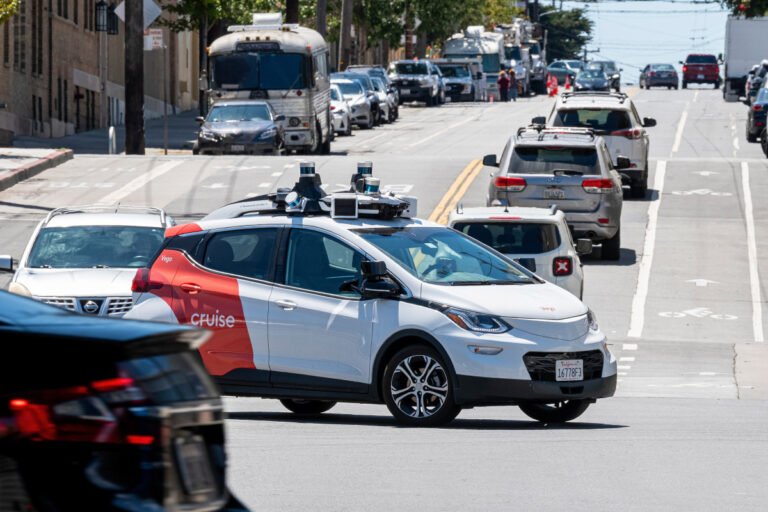
To win the 21st century, America must adopt a strategy for becoming the world’s undisputed heavyweight energy producer. President Trump has put America on the path to energy dominance by removing Biden-era restrictions on liquefied natural gas and oil, reopening federal lands to drilling, and paving the way for a renaissance in American nuclear energy.
Achieving energy dominance isn’t just about making energy cheaper. It’s also critical to meeting demand that is growing at an exponential rate.
The rapid growth of artificial intelligence is fueling this burgeoning energy demand. AI isn’t just a tool; it’s a game-changer, poised to unleash a wave of productivity, ignite innovation and supercharge efficiency. Leading in AI isn’t just about technological edge — it’s the bedrock of America’s future as a global economic powerhouse.
If we are to win the AI race, we have to be able to power it. And the demands AI computing places on our energy supply are extreme.
By 2030, the booming growth of AI data centers is poised to contribute to a staggering 25 percent spike in U.S. electricity demand. That number could nearly triple to 78 percent by 2050.
A sober assessment of America’s energy demands reveals we cannot chain our future to renewables. Intermittent production by wind and solar renewables an unreliable source of base load power. Then there’s the economics of adopting green energy solutions, which to date have been infeasible absent rich government subsidies. President Trump has called out green tax credits for being a “giant SCAM.”
Perhaps most importantly, widespread adoption of renewable energy would primarily aid China, which has seized dominant positions in solar panel and electric battery technology and manufacturing, while also controlling access to the rare earth materials needed for these technologies.
Trump has called for an end to the green energy madness and removed the shackles on traditional energy sources. But more than that, he’s also signaled a renaissance of nuclear energy, an industry that had been marginalized for decades.
Trump has pledged to quadruple U.S. nuclear capacity by 2050 through a series of executive orders designed to streamline regulations and speed approvals. This couldn’t have come too soon.
As new construction in America came to a near halt for more than 30 years, our foreign competitors forged ahead with next generation nuclear power. Since 2010, when China matched our total electricity production, it has added 2 Terawatts to its grid every five years, while U.S. production remained flat.
To compete, we must increase electricity production at a rate that can only be achieved by rapid building of nuclear reactors. And we won’t get there by going slow, or by studying the problem ad nauseum.
Government efforts like the Advanced Reactor Demonstration Program to develop new nuclear technology have their place. Trump initiated that effort in 2020, but like many government research projects, it has fallen behind schedule and gone over budget.
Programs that had been anticipated to start producing electricity as early as 2005, are delayed, in part because they use a type of fuel only produced in Russia. In 2022 that became a real problem.
Like so many government research programs, unmoored from hard performance objectives, these programs have been mindful to show work and prolong funding flows, even in the absence of tangible results. One of the ways they’ve done that is by submitting reams of reports, some that aren’t legally required, ostensibly to streamline a future application.
And while it might help those projects down the road, in the meantime the review of those reports consumes years of regulatory resources, as Nuclear Regulatory Commission regulators — already stretched thin — drown in paperwork.
Then there is the question of whether government funding is really necessary to develop this technology — a fitting question for an administration so committed to cutting government waste. The industry has demonstrated it can raise capital, certainly now that Trump has demonstrated his commitment to nuclear energy.
Putting our faith in America’s energy future on nuclear research programs simply won’t cut it. We will never meet the president’s goal of quadrupling nuclear energy production in 25 years if one-third of the time is spent just getting a new reactor off the drawing board.
America’s energy-intensive future needs a quicker and repeatable approval process for nuclear power. We need to start building new plants now.
Trump has been down this road before. If he’d accepted the orthodoxy about new drug approvals, we’d still be looking for a vaccine for COVID-19, studying the problem as the world fell apart. To meet the challenge of our growing energy demands, we need an Operation Warp Speed for nuclear energy.
Now, as then, the solution is sure to come from government getting out of the way and allowing the private sector to innovate and build.
John Czwartacki, former senior advisor at the White House Office of Management and Budget, is co-founder and principal of Public Policy Solutions.






